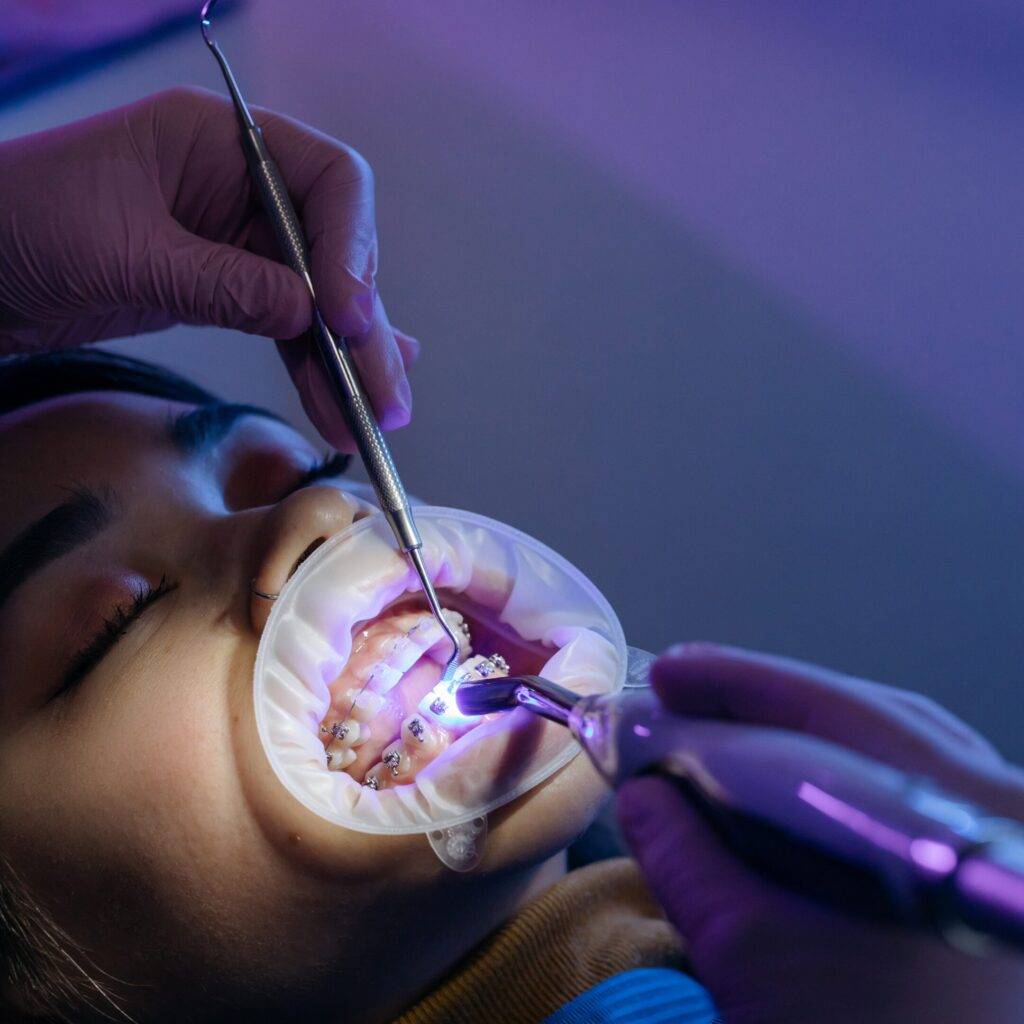Braces have been helping to correct malocclusion and improve the aesthetics of the smile for years. One modern solution that is gaining in popularity is the fixed self-ligating braces. Thanks to its special design, it differs from traditional braces, offering patients greater comfort and shorter treatment times.
How does this type of camera work? How does it differ from classic solutions? What effects can be achieved? We answer these questions in the article.
How do fixed self-ligating braces work?
Traditional orthodontic appliances use ligatures (elastics or wires) that hold the orthodontic arch in the brackets. Fixed selfligating braces eliminate the need for ligaturesas it has locks with a built-in latching mechanism.
- Lower friction resistance - teeth can move more freely, which speeds up treatment
- Fewer follow-up visits - no elastics means the orthodontist doesn't have to change them every few weeks
- Easier hygiene - no ligatures reduce the risk of food debris and plaque build-up
How do selfligating braces differ from traditional braces?
- No ligatures - in classic braces the arch is held in place by elastics, in selfligating braces this is done by a special clip in the brackets
- Faster treatment - less friction allows the tines to move more efficiently
- Less pain and discomfort - lower contact pressure means patients feel less discomfort
However, this does not mean that self-ligating braces are ideal for everyone. The orthodontist selects the treatment method individually, depending on the type and degree of the malocclusion.
What are the effects of selfligating braces?
- Straighter, better aligned teeth - effectively corrects curvatures and rotations
- Improving the facial profile - in some cases the treatment affects the appearance of the maxilla and mandible
- Faster treatment than conventional instruments - several months shorter treatment time on average
- Improved oral hygiene - no ligatures reduce the risk of caries and gingivitis
The effects are visible after just a few months of wearing, but the final treatment time depends on the individual patient's case.
Frequently asked questions by patients
- Are selfligating braces less painful?
Yes! Thanks to the reduced friction, the teeth move more smoothly, which means less pain than in traditional braces.
- Are selfligating braces more expensive than traditional braces?
Yes! Thanks to the reduced friction, the teeth move more smoothly, which means less pain than in traditional braces.
- Are selfligating braces more expensive than traditional braces?
The cost is slightly higher, but the shorter treatment time and fewer follow-up visits can compensate for this.
- Is it possible to eat everything with this camera?
No. Avoid very hard and sticky foods that can damage the locks.
- How often do I need to visit the orthodontist?
Follow-up visits take place every 6-8 weeks, which is less often than with classic braces.
Summary
Fixed selfligating braces are a modern solution, which allows for faster, more effective and more comfortable orthodontic treatment. With its innovative brackets, it eliminates the need for ligatures, reduces patient discomfort and facilitates oral hygiene.
- If you are considering orthodontic treatment, it is worth asking your orthodontist about this type of brace. It may be the perfect solution for you!
What is worth getting to know?
If you are interested in treatment with fixed self-ligating braces, check also:
- Orthodontic extractions: how do they affect treatment? - Find out how they work and why they are so important in therapy.
- Pain and discomfort when wearing lifts - how to cope? - practical tips on how to reduce pain and avoid irritation.
- Oral hygiene during orthodontic treatment - a guide - check how to look after your teeth to avoid gum problems and tooth decay.
- Read more and keep your smile healthy!
